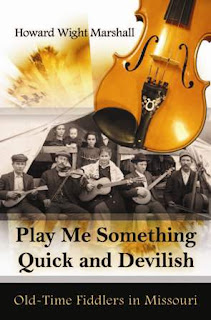 In The Missouri State Penitentiary, Jamie Pamela Rasmussen recounts the long and fascinating history of the place, focusing on the stories of inmates and the struggles by prison officials to provide opportunities for reform while keeping costs down. Tales of prominent prisoners, including Pretty Boy Floyd, Sonny Liston, and James Earl Ray, provide intrigue and insight into the institution’s infamous reputation.
In The Missouri State Penitentiary, Jamie Pamela Rasmussen recounts the long and fascinating history of the place, focusing on the stories of inmates and the struggles by prison officials to provide opportunities for reform while keeping costs down. Tales of prominent prisoners, including Pretty Boy Floyd, Sonny Liston, and James Earl Ray, provide intrigue and insight into the institution’s infamous reputation.Q: What inspired you to write this book?It was really a case of being the right person in the right place at the right time. I had gotten my undergraduate degree in history, and when the Jefferson City Convention and Visitors Bureau started giving tours at the Penitentiary, I was working in the criminal division at the Attorney General’s Office just down the street. The combination of my interest in history and criminal justice with the excitement generated by the tours made the idea of writing a book about the history of the Penitentiary irresistible.
Q: Did you learn anything unexpected from your research?Yes. The thing that I found most unexpected in my research was the existence of political prisoners. Before I really got into my research, I was naïve enough to believe that America did not persecute people for their beliefs. However, during my research, I found that prior to the civil war, abolitionists were imprisoned at the Missouri State Penitentiary and that during World War I, Kate Richards O’Hare served a term for opposing the war. The political prisoners were all very literate, and they provided detailed accounts of their imprisonment. They also showed great compassion for their fellow prisoners, which really humanized the story for me.
Q: How have prisons or ‘correctional facilities’ changed since the closing of the Missouri State Penitentiary? Is the correctional system more effective now?In my book I discuss how the trend to provide more treatment and rehabilitation was a factor in the decision to close the Missouri State Penitentiary. Since the closing of the Missouri State Penitentiary, correctional facilities have continued that trend. There are more opportunities for different types of treatment and education, and we tend to employ alternatives to incarceration more and more. Whether the system is more effective or not is a subject of much scholarly debate. Crime rates have been going down in recent years, and that is often cited as a measure of success. On the other hand, rates of recidivism are still high. I think we have improved our criminal justice system, but it is still far from perfect.
Q: What kind of new methods do you think correctional institutions will be utilizing in the next ten or twenty years?
I think we will see more of a shift to community corrections rather than a shift in the way our current correctional institutions are operated. Community corrections employs probation combined with treatment, education, and other programs to help rehabilitate offenders while they remain in their community. The reason I think this option will be more popular is the continued media attention on overcrowded conditions in correctional facilities. Community corrections allows us to provide needed interventions at a much lower cost without increasing overcrowded conditions in our correctional facilities.
Q: There has been a lot of recent talk in news circles about how legalizing marijuana might help curb the number of repeat offenders and shelter many youth and minorities from lifelong debauchery and incarceration. Conversely, other news circles talk about how drug use will sky rocket, crime will not statistically diminish, and that there are numerous health concerns on top of moral contradictions. What is your take on this after studying the Missouri State Penitentiary?I don’t think legalizing marijuana will have a significant effect on rates of incarceration. Throughout the history of the Missouri State Penitentiary, the vast majority of prisoners were incarcerated for what almost everyone would consider very serious crimes—murder, robbery, kidnapping, and felony theft to name just a few. Low level, first-time drug offenders, especially those whose drug of choice is marijuana, generally do not make up a large proportion of the prison population. Of course, my data set is relatively narrow, because my research focused on only one institution. The truth is that human behavior is a very complex phenomena and so predicting what will happen based on past statistics is a tricky business at best. We’ll just have to watch and see what happens in Colorado and Washington.
Q: What will your next book be about and when can we expect to read it?Although I’m still in the very early stages of my research, I think my next book will be about the trial and imprisonment of Kate Richards O’Hare. As I said above, her story was one of the surprising things I found during my research about the Missouri State Penitentiary. Her persistence and dedication to her cause were inspiring, and it would allow me to continue to explore the history of criminal justice in America. Unfortunately, I think it’ll be at least a year if not more before that work is ready for publication.


